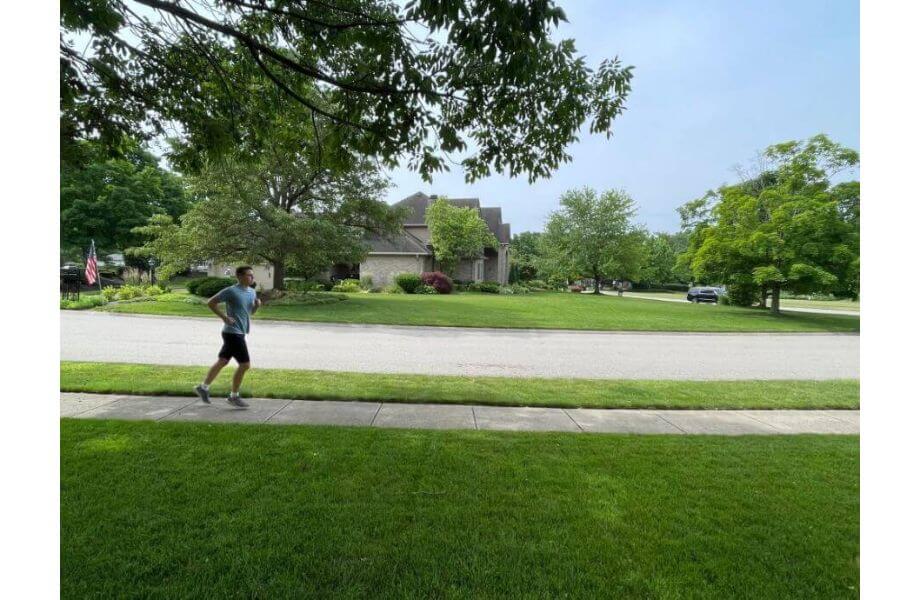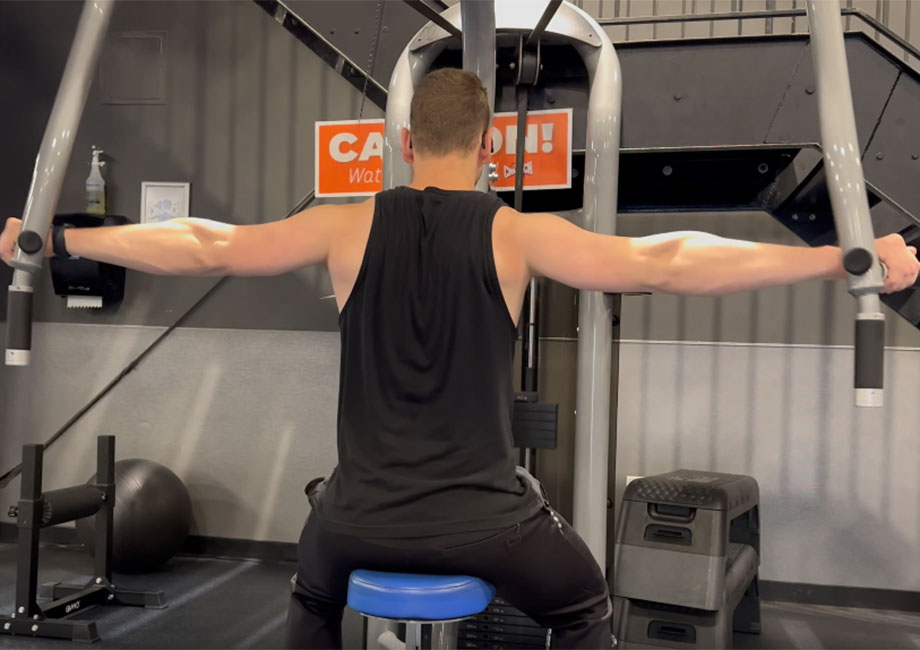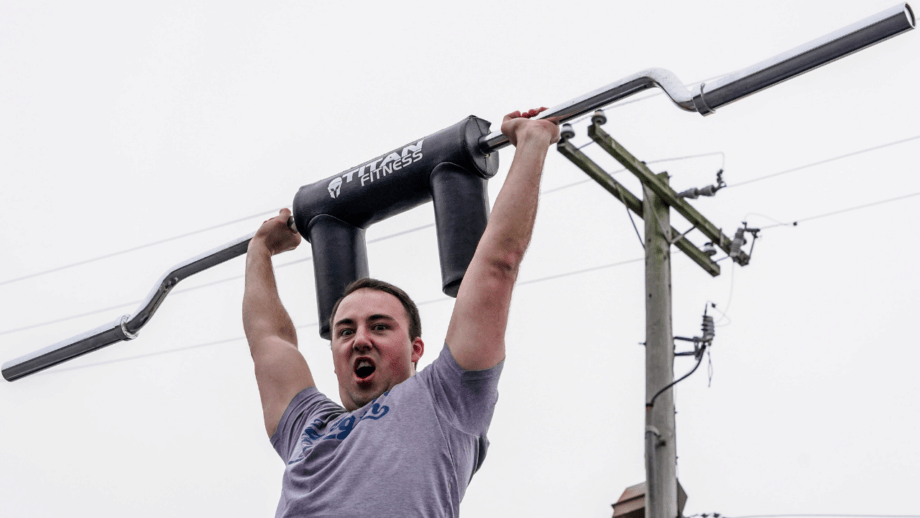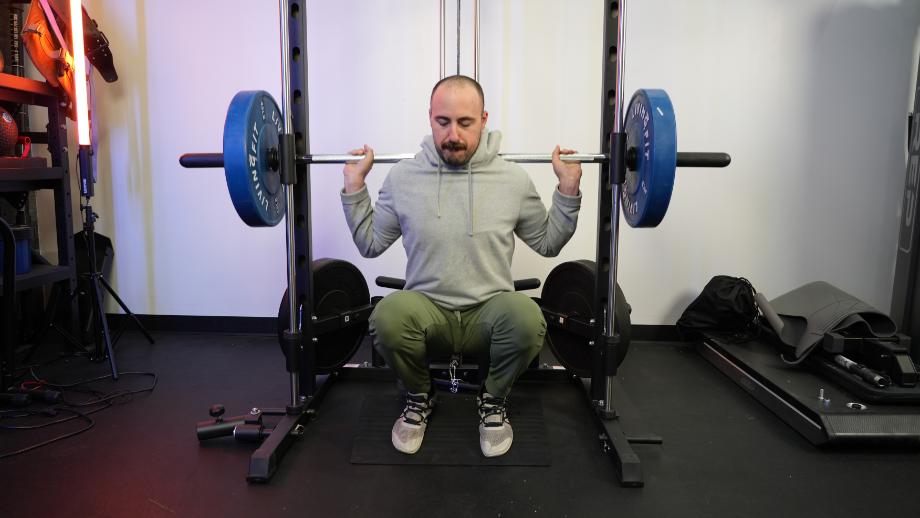Believe it or not, running shoes aren’t just any old pair of shoes you decide to wear to go for a run. Crazy, right?
In fact, specialty running shoes can provide numerous benefits for any runner and enhance the running experience in the process. They help support and cushion your feet, and many of them are designed to help protect your body from injury. Runners of any experience level should consider adding a pair of running shoes to their workout wardrobe.
Finding the right shoe, however, can prove difficult. This guide contains everything we think you should know about how to choose running shoes. Your feet will thank you later.
Why Buy Running Shoes?
Some of you may be thinking, “Why would I go to the trouble of buying a new pair of running shoes when I could just use the generic sneakers I already have?”
It’s a common question, and one I’ve pondered myself at times. The fact is, the act of running puts strain on many areas of the body, including the ankles, knees, and lower back, and using a pair of properly fitted running shoes can help negate some of that stress and prevent injuries as well, according to orthopedic specialist Dr. Mike Masi.
“If your foot and ankle are going through aberrant motions, the shoe can actually provide support in that area to mitigate those movements,” Masi says.
Types of Running Shoes
Before you think about buying, it’s important to know which type of running shoes you’re in the market for. There are three main types to be aware of, each specifically suited to a different running environment. Depending on where you’ll be running, knowing how to choose the best running shoes for you can go a long way in improving your experience. Here are the three categories to look out for.
RELATED: Treadmill Vs Outside Running
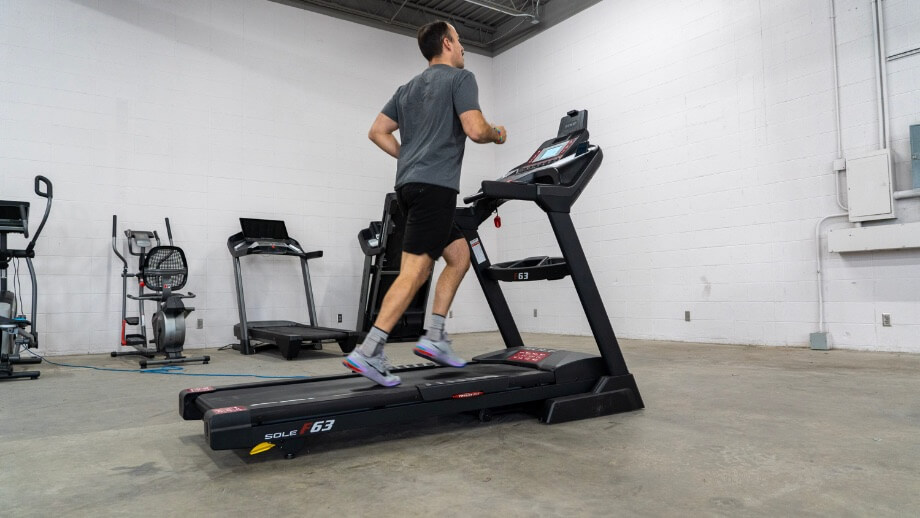
Road-Running Shoes
Unfortunately, these won’t make you as fast as the speedy bird from the cartoon. They are, however, meant to be used on hard, uniform surfaces like pavement, concrete, or treadmills. Also, they can help provide additional stability while running. These shoes will typically be lightweight and feature a relatively smooth sole to match the surface underfoot.
Trail-Running Shoes
In the case of trail-running shoes, the name tells you most of what you need to know. If you frequently stray off the beaten path (dirt paths, hiking trails, etc.) for your runs, these are the shoes for you. The bottoms of these shoes will likely feature small spikes or cleats to prevent runners from slipping on uneven, natural terrains. Also keep an eye out for increased rigidity in the midsole for extra stability.
Cross-Training Shoes
These shoes generally have a thinner sole and are used for indoor workouts or cross-training sessions. They’re meant to give the user a better feel for the running surface they’re using, and aren’t normally worn for long-distance runs. Check out our full review of the best cross-training shoes for 2023.
RELATED: Product: Lululemon Blissfeel Running Shoe
Shoe Cushioning
- Barefoot: Running shoes that feel the most like bare feet are referred to be barefoot cushioning. Most lack a heel cushion and have no stability or arch support.
- Minimal: Some runners prefer footwear with little or no midsole cushioning to feel more natural and in which they could feel the ground they are running on.
- Moderate: Running shoes with a moderate amount of cushion are for runners who find a compromise between thin or no cushion.
- Maximum: Maximum cushioning on running shoes includes ample padding. When running long distances or multi-day events, some runners may or may not prefer the comfort of thicker, softer foam beneath their feet.
Know Your Shoe Anatomy
Understanding all the different parts of a shoe can be surprisingly confusing. Outsoles, toe boxes, midsoles—who’s got time for it all? There’s a lot to go over, but knowing the basics can make it easier to figure out how to choose the right running shoes.
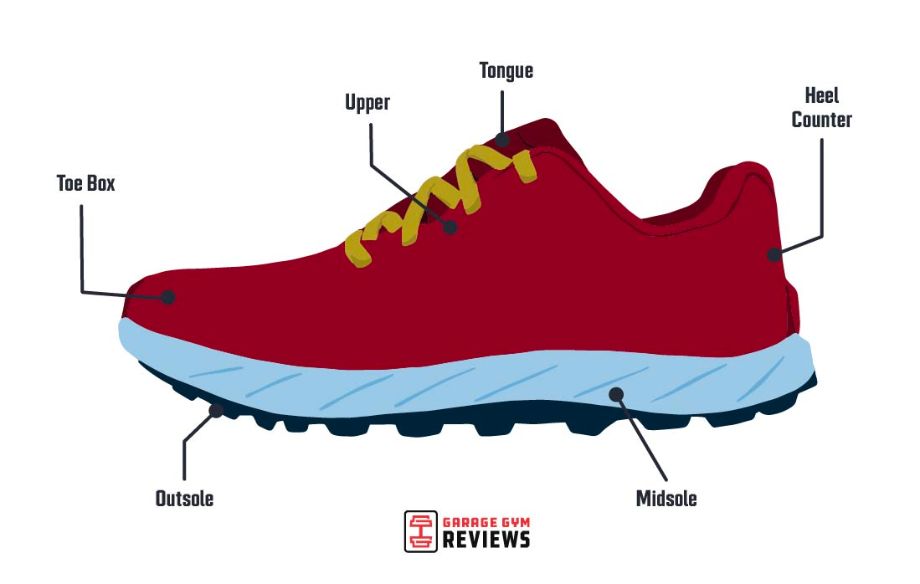
This list of terms will help you understand the anatomy of your shoes, from heel to toe:
- Upper: A broad term that encompasses the entire portion of the shoe located atop the sole.
- Midsole: Refers to the foam cushion in the sole; minimizes the effects of foot impact.
- Tongue: The soft, non-rigid portion of the shoe that lies directly beneath the laces.
- Heel Counter: A stiff outline inside the back of the shoe that provides heel support.
- Outsole: The rubber part of the shoe that directly impacts the running surface.
- Toe box: Refers to the part of the upper nearest to the front end of the shoe that usually contains a more rigid toe bumper.
Know Your Stride
A runner’s stride is a little bit like a snowflake: No two are exactly alike. Understanding your stride is crucial to finding the perfect pair of shoes that will allow you to make the most of your running experience every time you hit the track (or sidewalk, or trail, or treadmill—you get the picture).
Your stride is all about how your foot strikes the ground; how much does it roll inward or outward upon impact? There are three main categories of stride to consider, and shoe characteristics that pair with each of them.
Of course, it can be difficult to figure out exactly what your stride looks like. Often, employees at specialty footwear stores can help determine this by observing the way you run, allowing you to find a pair of shoes that meet your needs.
Basic Pronation
This is the type of stride in which the runner’s foot rolls inward a normal amount after it strikes the ground. This is the most ideal stride from an injury prevention standpoint, as it can take the strain off the knees and other affected areas of the body. You might find one of your current shoes to be distressed around the ball of your foot and the outer portion of the heel if your stride aligns with basic pronation. Neutral running shoes, or shoes without added stabilizing pieces, are recommended for runners with basic pronation.
Overpronation
When a runner overpronates, their foot rolls inward too much after striking the ground. Overpronation is a cause for concern for runners, as it can result in injury if not properly addressed. If you’re prone to overpronation, your current running shoes might show some signs of wear and tear along the inner portions.
Stability shoes, or shoes with increased rigidity due to added stabilizing pieces called medial posts, can help combat overpronation. Stability running shoes are often effective, but severe overpronation may call for the even-more-rigid motion control shoes.
Supination
Supination, in which the runner’s foot rolls outward while striking the ground, is less common but can still result in injury. Check the outer portions of your current shoes near your forefoot and heel for wear and tear to see if you’re prone to supination while running. If you find this applies to you, a shoe with added cushioning or a standard neutral shoe might be the right choice.
What to Look For in a Running Shoe
While shoe shopping in any capacity is fun, there’s a lot to consider when picking out a new pair of running shoes. Here are some things to look out for so you can put your best foot forward during the buying process.
Find The Right Feel
Maybe the most important consideration to make when buying a pair of shoes is how they feel when you’re wearing them. For running shoes, each runner will have a different preference regarding the amount of cushioning and the firmness they want to feel in the midsole.
There are four different levels of cushioning: maximum, moderate, minimal, and barefoot. The levels progress as you might expect, with maximum cushioning providing a plush feel and enhanced shock absorption thanks to a thick midsole, and barefoot offering the thinnest possible barrier between foot and ground.
The question is, how much do you want to feel the ground beneath your feet as you run? If the answer is very little, give maximum cushioning shoes a try, as research shows that maximalist shoes can reduce pressure on the foot during running. If you want to feel the surface as much as possible, consider barefoot shoes. If you’re somewhere in the middle, moderate or minimalist shoes might be the ones for you.
Another factor to consider is heel drop, which is the measurement of the height difference between a shoe’s heel cushioning and toe cushioning. If you choose a shoe with low or zero-drop, a heel-first strike becomes more likely, whereas a shoe with higher drop encourages a strike driven by the midfoot. Drop is measured in millimeters, and most running shoes have drop levels at or above 10 millimeters.
There are also aftermarket options like orthotics and specialty insoles that can help your shoes blend better to your foot shape as well. Consider adding these into the mix if you’re looking for a little extra cushioning or enhanced support.
Bang For Your Buck
The elephant in the room with any piece of fitness equipment is the price. Sure, a pair of running shoes might look great at first glance, but are they worth it if they break the bank? A pair of running shoes will run you anywhere from $60 to $170, with a few outliers straying above or below that range.
As with any piece of fitness equipment, the more you pay, the higher quality you can likely expect. With something like running shoes, finding the balance between quality and affordability is important.
Before you buy, have a budget in mind and consider how frequently you’ll use the shoes after you purchase them. If you’re running five to six times a week and have the money to spend, it might be worth it to purchase a higher-end pair. If you’re a more casual runner, then something in the $60-$80 range might be the better choice for you.
RELATED: What is VO2 Max? The Fitness Metric You Didn’t Know You Needed
Comfort
The best advice I can give you here is to try as many shoes on as you can. Whether you have narrow feet, wide feet, or something in the middle, the best way to make sure the shoe fit is correct is to test them out before you buy.
Consider the way the shoes feel around your toes, and make sure they’re not squeezing the sides of your feet too tightly when you move around in them. Each person’s foot shape is unique.
Dr. Masi recommends taking comfort into consideration above all else when picking out a shoe.
“If someone recommended a shoe, if all things aligned but they put it on and it’s just not comfortable, that’s probably not a good shoe for you.”
Substance Over Style
While there are countless styles of running shoes to choose from, we advise not to let fashion trump functionality during the buying process. The colors and design might be attractive on the surface, but the appeal will wear off quickly if the fit prevents you from enjoying a comfortable, injury-free running experience.
Size Matters
This one might seem obvious, but finding the right size can be tricky sometimes, especially when navigating between different brands. For example, a size 9 Saucony might fit differently than a size 9 Nike, which is something to consider when buying running shoes. Shoes that are too small can cause discomfort or blisters during running, while wearing an oversized pair can decrease stability during your workout. I’ve sprained enough ankles to know incorrect sizing isn’t something worth messing with.
If you’re anything like me, you find it difficult to know the right amount of space to leave between your big toe and the end of the shoe when trying on new pairs. For running shoes, it’s recommended to leave about a gap about the length of a thumbnail in that space to ensure the shoes fit just right.
If you’re not sure what size you are, this chart can give you a better idea based on the measurements of your feet and your foot type:
Women’s Running Shoe Size Chart
| U.S. Size | Foot Length (in) | Narrow Width-AA (in) | Medium Width- M or B (in) | Wide Width- D (in) |
|---|---|---|---|---|
| 5 | 8 9/16″ | 2 13/16″ | 3 3/16″ | 3 9/16″ |
| 5.5 | 8 3/4″ | 2 7/8″ | 3 1/4″ | 3 5/8″ |
| 6 | 8 7/8″ | 2 15/16″ | 3 5/16″ | 3 11/16″ |
| 6.5 | 9 1/16″ | 3″ | 3 3/8″ | 3 3/4″ |
| 7 | 9 1/4″ | 3 1/16″ | 3 7/16″ | 3 13/16″ |
| 7.5 | 9 3/8″ | 3 1/8″ | 3 1/2″ | 3 7/8″ |
| 8 | 9 1/2″ | 3 13/16″ | 3 9/16″ | 3 15/16″ |
| 8.5 | 9 11/16″ | 3 1/4″ | 3 5/8″ | 4″ |
| 9 | 9 7/8″ | 3 5/16″ | 3 11/16″ | 4 1/16″ |
| 9.5 | 10″ | 3 3/8″ | 3 3/4″ | 4 1/8″ |
| 10 | 10 3/16″ | 3 7/16″ | 3 13/16″ | 4 3/16″ |
| 10.5 | 10 3/8″ | 3 1/2″ | 3 7/8″ | 4 1/4″ |
| 11 | 10 1/2″ | 3 9/16″ | 3 15/16″ | 4 5/16″ |
| 11.5 | 10 11/16″ | 3 5/8″ | 4″ | 4 3/8″ |
| 12 | 10 7/8″ | 3 11/16″ | 4 1/16″ | 4 7/16″ |
Men’s Running Shoe Size Chart
| U.S. Size | Foot Length (in) | Narrow Width- B (in) | Medium Width- D (in) | Wide Width- EE (in) |
|---|---|---|---|---|
| 6 | 9 1/4″ | 3 5/16″ | 3 1/2″ | 3 11/16″ |
| 6.5 | 9 1/2″ | 3 3/8″ | 3 9/16″ | 3 3/4″ |
| 7 | 9 5/8″ | 3 7/16″ | 3 5/8″ | 3 13/16″ |
| 7.5 | 9 3/4″ | 3 1/2″ | 3 11/16″ | 3 7/8″ |
| 8 | 9 15/16″ | 3 9/16″ | 3 3/4″ | 3 15/16″ |
| 8.5 | 10 1/8″ | 3 5/8″ | 3 13/16″ | 4″ |
| 9 | 10 1/4″ | 3 11/16″ | 3 7/8″ | 4 1/16″ |
| 9.5 | 10 7/16″ | 3 3/4″ | 3 15/16″ | 4 1/8″ |
| 10 | 10 9/16″ | 3 13/16″ | 4″ | 4 3/16″ |
| 10.5 | 10 3/4″ | 3 7/8″ | 4 1/16″ | 4 1/4″ |
| 11 | 10 15/16″ | 3 15/16″ | 4 1/8″ | 4 5/16″ |
| 11.5 | 11 1/8″ | 4″ | 4 3/16″ | 4 3/8″ |
| 12 | 11 1/4″ | 4 1/16″ | 4 1/4″ | 4 7/16″ |
| 12.5 | 11 1/2″ | 4 1/8″ | 4 5/16″ | 4 1/2″ |
| 13 | 11 9/16″ | 4 3/16″ | 4 3/8″ | 4 9/16″ |
| 13.5 | 11 3/4″ | 4 1/4″ | 4 7/16″ | 4 5/8″ |
| 14 | 12″ | 4 5/16″ | 4 1/2″ | 4 11/16″ |
| 14.5 | 12 1/8″ | 4 3/8″ | 4 9/16″ | 4 3/4″ |
| 15 | 12 3/16″ | 4 7/16″ | 4 5/8″ | 4 13/16″ |
Different Ways on How to Buy Running Shoes
Personally, I find shoe shopping very overwhelming. The brands, colors, and sizes all seem overstimulating whenever I look online or walk into the store. It’s no different for running shoes, with a thousand different brands and colorways vying for your attention at any given moment. Knowing how to buy running shoes can help your experience play out smoothly.
Buying running shoes online can be tricky. Unless you’ve been buying from the same brand or site for an extended period of time, it can be tough to predict how a pair of shoes will fit after you buy them. Tread lightly when buying online, and have a solid understanding of your foot size and shape before you do so.
Buying in-person can take care of potential sizing and comfort issues, but it also matters where you’re buying from. It might be difficult to find the individual attention you need when buying from a larger chain store unless you have a complete knowledge of your sizing and how those particular shoes will fit your feet.
You can never go wrong with shopping for running shoes at a specialty running store. Most stores like this employ footwear specialists who can give an accurate gait analysis and prescribe shoes to match the arch support and comfort levels you need.
RELATED: Best Running Shoes for High Arches
Regarding how often to buy new running shoes, it’s recommended that you pick up a new pair after every 300 to 500 miles of use rather than after a certain amount of time has passed.
There are a lot of hoops to jump through during the buying process, but taking time to find the right pair of running shoes for you will pay off in the long run.
How to Choose Running Shoes FAQs
How do you know what type of running shoe you need?
depending on your stride. There are different types of shoes that correspond to each type of running environment and running style. Trail-running shoes are meant for off-road, natural environments, road-running shoes are meant for hard, flat surfaces, and cross-training shoes are frequently used for indoor workouts or cross-training sessions.
What are three factors to consider when buying running shoes?
Three factors to consider when buying running shoes include durability, price, and comfort and support levels. These will help you find the shoe that’s right for you.
What are the three types of running shoes?
The three types of running shoes are road-running shoes (best for hard surfaces like pavement), cross-training shoes (best for indoor workouts and cross-training sessions), and trail-running shoes (best for uneven surfaces like dirt or gravel).
What are the qualities of a good running shoe?
Each runner will need something unique, but a good running shoe will be durable, cost-effective, supportive for your feet, and well-suited for your running environment.


